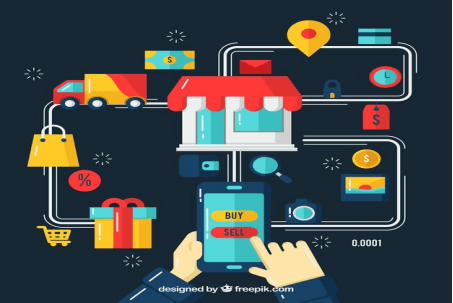In the dynamic world of digital commerce, the pursuit of increased conversion rates is paramount for businesses striving to thrive in the competitive online landscape. The synergy between conversion and e-commerce is the backbone of a successful online presence, requiring a strategic approach that encompasses user experience, marketing tactics, and cutting-edge technologies. In this comprehensive guide, we will delve into the intricacies of conversion optimization in the realm of e-commerce, exploring key strategies to enhance your online store’s performance and boost revenue.
Understanding Conversion in E-commerce:
Conversion in e-commerce refers to the transformation of website visitors into customers, signifying the successful completion of desired actions such as making a purchase, subscribing, or filling out a form. Achieving a high conversion rate is the ultimate goal for online businesses, as it directly impacts revenue and profitability. To enhance conversion rates, businesses must focus on various aspects, ranging from website design and user interface to persuasive copy-writing and seamless checkout processes.
Optimizing User Experience:
A seamless and enjoyable user experience is fundamental to driving conversions in e commerce. A well-designed website with intuitive navigation, clear product information, and visually appealing elements can significantly impact a visitor’s decision-making process. Mobile optimization is equally crucial, considering the increasing prevalence of mobile commerce. By ensuring that your website is responsive and user-friendly across various devices, you can capture a broader audience and improve conversion rates.
Strategic Marketing for Conversion:
Effective marketing strategies play a pivotal role in driving traffic and encouraging conversions. Utilizing targeted advertising, social media marketing, and content marketing can increase brand visibility and attract potential customers. Additionally, implementing personalized marketing campaigns, leveraging data analytics, and utilizing re-targeting techniques can re-engage visitors who may not have converted during their initial visit.
The Power of Direct Mail in Conversion:
In the digital age, where online interactions dominate, direct mail stands out as a powerful and often overlooked tool for increasing conversion rates. A well-crafted direct mail campaign can complement your online efforts by reaching potential customers tangibly and memorably. Direct mail adds a personal touch, creating a physical connection that resonates with recipients. A postcard showcasing exclusive deals, a catalog featuring popular products, or a personalized letter expressing gratitude can capture attention and drive recipients to your e-commerce platform.
Direct mail offers a unique opportunity to break through the digital noise and stand out in the minds of consumers. Integrating direct mail into your marketing strategy can create a multi-channel approach that reinforces your brand message. By combining online and offline touchpoints, you establish a more comprehensive and impactful presence, increasing the likelihood of conversion.
Crafting a Compelling Direct Mail Campaign:
When implementing a direct mail service in your conversion strategy, it’s essential to craft a compelling campaign that aligns with your brand and resonates with your target audience. Consider segmenting your mailing list to tailor messages based on customer preferences, demographics, or past interactions. Personalization is key in making recipients feel valued and increasing the chances of conversion.
Include enticing offers, exclusive discounts, or limited-time promotions to create a sense of urgency and incentivize action. A well-designed direct mail piece should include a clear call to action directing recipients to your e-commerce website. Providing a unique discount code or a QR code for easy online access can track the success of your direct mail campaign and provide insights into its impact on conversion rates.
Measuring and Analyzing Conversion Data:
To refine and optimize your e-commerce conversion strategy, it’s crucial to regularly measure and analyze relevant data. Utilize tools like Google Analytics to track user behavior, identify traffic sources, and monitor conversion rates. Pay attention to key performance indicators (KPIs) such as bounce rate, average session duration, and the conversion funnel to pinpoint areas for improvement.
A/B testing is a valuable technique for experimenting with different elements on your website, such as headlines, images, or call-to-action buttons, to determine what resonates best with your audience. By continuously testing and iterating, you can make data-driven decisions that enhance the user experience and drive higher conversion rates over time.
Embracing Technology for Conversion Optimization:
In the ever-evolving landscape of e-commerce, staying ahead requires leveraging advanced technologies. Implementing artificial intelligence (AI) for personalized product recommendations, chatbots for real-time customer support, and machine learning algorithms for predictive analytics can enhance user experiences and drive conversions.
Optimizing website speed and performance is equally critical, as slow-loading pages can deter potential customers. Ensure that your e-commerce platform is equipped with the latest security features, providing a secure and trustworthy environment for online transactions.
Conclusion:
In the symbiotic relationship between conversion and e-commerce, success lies in a holistic approach that encompasses user experience, marketing strategies, direct mail campaigns, and technological advancements. By prioritizing the optimization of each component and continuously adapting to evolving trends, businesses can unlock the full potential of their online presence. As we navigate the digital landscape, it’s essential to recognize the enduring impact of direct mail in an era dominated by virtual interactions. Integrating direct mail into your conversion strategy adds a tangible dimension to your marketing efforts, fostering connections that resonate with customers and contribute to the overall success of your e-commerce venture.



